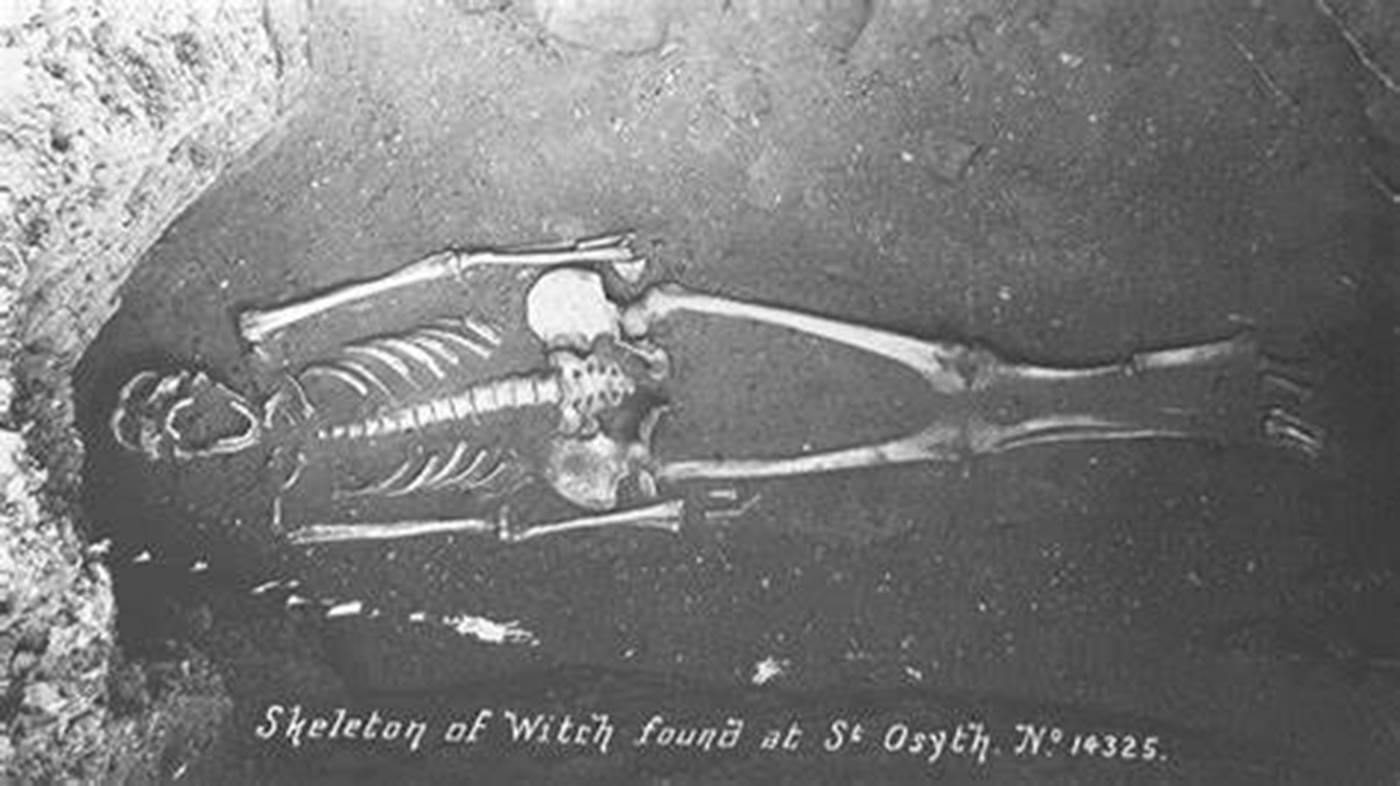The sad story of the women accused of witchcraft did not stay buried. 339 years later, in 1921, men were digging in the sandy soil behind a cottage on Mill Street when their spade hit something hard and two human skeletons were unearthed. The owner of the cottage, Charles Brooker swiftly declared them to be the bones of Ursula Kemp and Elizabeth Bennett, the two women hung for witchcraft. He capitalised on this claim, selling tickets to view the bones and even creating postcards to sell to the visitors. A fire in the cottage saw the skeletons buried under the debris where they remained for 30 years, the fire only adding to the belief that the skeletons were witches capable of causing destruction even from beyond the grave. When Charles’ son, Paul, wanted to build a house on the site the more intact skeleton, thought to be Ursula Kemp, was exhumed and sold to the Witchcraft Museum in Boscastle for £99. From here it was purchased by eccentric artist Robert Lenkiewicz who had a fascination with magic, witchcraft and the occult. He kept the bone in a blue lined coffin in his library and it is said he regularly spoke to them. After Lenkiewicz’s death and the lengthy process of sorting out his estate the body found in Mill Street was returned to the village. On route the skeleton was assessed by osteo-archaeologists who concluded the bones were those of a man in his mid-twenties, not a woman in her fifties. Interestingly, it also appeared that the iron rivets through some of the bones were a later addition, perhaps to substantiate the theory that the skeletons were those of witches. Whoever it belonged to, the skeleton has now been laid to rest in a corner of the Cemetery in St. Osyth in an unmarked grave.
The story of the women from St. Osyth accused of witchcraft does not rest in peace but remains a fascination for locals and visitors alike. I often wonder why it has such a pull on our imaginations. Perhaps it is all the unknowns creating a sense of mystery and unfinished business. Perhaps it is the injustice surrounding the women who were tried in such a callous and underhanded way for crimes we known they could not have committed. Maybe is it because the St. Osyth witch trials of 1582 were the first in Essex, and England, and it set a precedent for horrendous trials across Europe. Scotland saw four times as many women tried for witchcraft than England, with a much smaller population and they burned them for their crimes. Maybe it is because the people from Essex who emigrated to the Americas and settled in Salem took their superstitions and belief in witchcraft with them creating another witch craze a century later. Perhaps the witch trails represents a past we hope we are far removed from. A time of fear, repression and superstition where men sacrifice others in the pursuit of riches and glory. Looking at this period of history might make us feel superior; feel as though we are thoroughly modern and rational and could never surrender to that way of thinking. I am not so sure.

